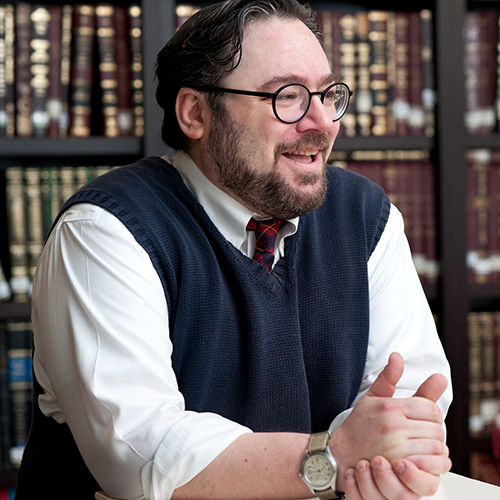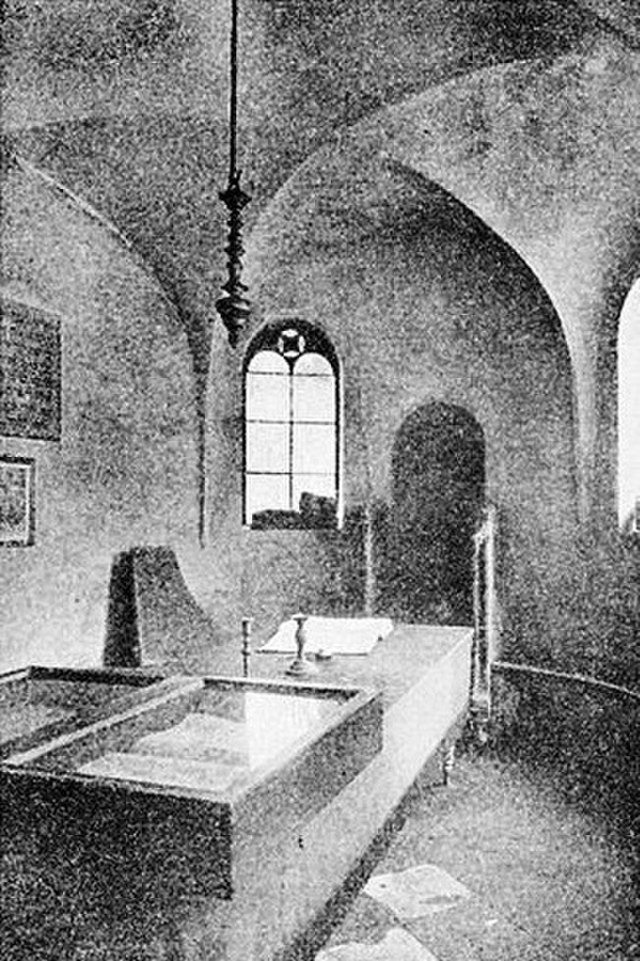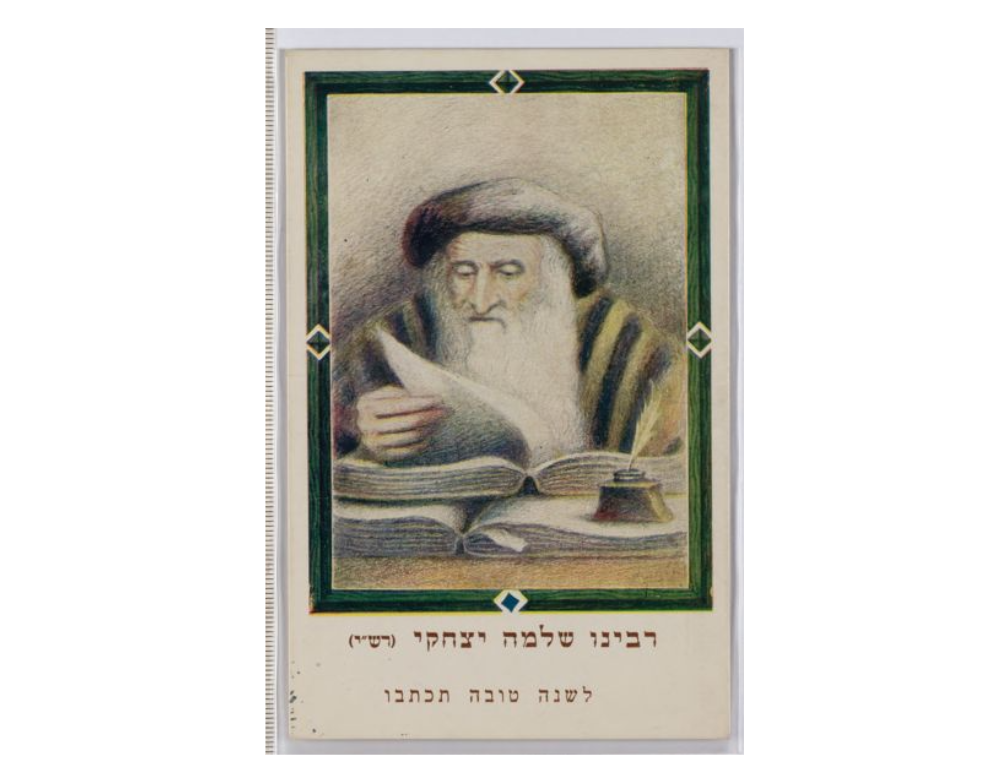Evolution of Torah: France

Establishing Torah Culture (Season 2, Episode 3)
This episode focuses on Rashi (1040 – 1105, Rabbi Solomon ben Isaac) and his intellectual (and genetic) heirs. We start by exploring the significant differences between French rabbinic culture and that of North Africa and Muslim Spain. As opposed to summarizing the law as presented in the Talmud which was the central aim of scholars like the RIF, Rashi embarked on a broader interpretative process which led his predecessors to the mammoth task of harmonizing conflicting and contradictory Talmudic discussion.
Show Notes
Bios
- Rabbi Solomon ben Isaac (Rashi, 1040-1105) Rashi is known for his commentary on both the Torah and Talmud, which gave rise to the prominence of French rabbinic scholarship. Within years of his death, his fame and work had spread to Spain, the Germanic provinces, and eastward.
- R. Jacob ben Meir of Ramerupt (Rabenu Tam, 1100–1171) A grandson of Rashi, Rabbi Jacob ben Meir was the most prominent Tosafist (tosafot means notes and referring to notes on the Talmud). He was a prominent member of the French Jewish community, working with other rabbis to respond to the ongoing challenges to Jewish life. The ba’alei tosafot like Rabenu Tam strove to create a cohesive interpretation of the Talmud, focused on providing a whole reading of the work, rather than focusing on the practical elements a la Alfasi.
- Rabbi Isaac of Dampierre (Ri Ha-Zaken, c.1115 – d. 1189) A great grandson of Rashi and nephew to Rabenu Tam, he founded a school in Dampierre. His tosafot completed Rashi’s commentary on the Talmud


Transcript
[Music]
Announcer Welcome to Season two of the Evolution of Torah, a podcast with Professor Rabbi Mordecai Schwartz. In this season, establishing rabbinic culture, Professor Schwartz traces the development of medieval Jewish legal literature through a journey to four key centers of learning across North Africa and Europe. This is episode three in which we travel to France to learn about the great commentator, Rashi, and his descendents.
Rabbi Mordecai Schwartz In this episode of our podcast will point out the different learning culture in France from that of Muslim Spain and North Africa that we talked about in the last episode. In order to illustrate this difference most clearly, I want to present a story that we have in the responsa of one of the major two figures we presented in the last episode, Rabbi Yitzhak Alfasi. In responsum number 223, he relates the following question presented to him by a small community in Spain.
Alfasi presents the following case:
Ruben and his wife and sons originally lived in eastern France, many days’ journey from Spain. Ruben left his wife and sons in their native place and was content to wander through the communities in the land of Spain. He came to a certain province in Spain and preached in public. When five of the leaders of the community met him, they urged him to bring his wife and sons to that province and dwell among them and become their Rabbi. But Ruben hesitated because his wife was far away and the expense of bringing his family would be great. But they continued to try to persuade him and he ultimately agreed. They contracted with him. They agreed to give him 24 gold pieces, every year for a term of 3 years. And he agreed to read before them Halakhah, Mishna and scriptures, and to preach the weekly portion, and to do whatever else they agreed upon by formal contract in writing and in the presence of witnesses.
The Rif goes into detail Ruben’s moving and the process of teaching. One of the community members, Issaachar doesn’t like the way Ruben teaches and refuses to pay the agreed upon amount.
Afasi answers siding with the community against Issachar, quote:
We see they are strong and valid and that it is obligatory upon you to fulfill all the conditions that you made between you. As for Issachar who changed his mind and does not wish to fulfill the conditions which he agreed to together with his fellows, he has not done right.
Alfasi goes on to discuss the matter in depth relating them to the Talmudic sources. But I think it fulfills our purpose well enough without going further into the matter. In Muslim Spain, to set this conflict in motion.
JTS Professor Jonathan Milgram puts this difference quite well, quote:
Unlike commentary in Muslim Spain, which focused on the interpretation of Talmud for the purpose of fleshing out practical law, the northern European interpretative project included commenting on those parts of Talmud that were not of any practical import, including tractates from the orders of Kodashim and Toharot, (dealing with matters of the Temple’s sacrifices and ritual impurity, respectively).
The result of this theoretical approach that Professor Milgram describes would eventually find its highest form in the revolution in learning that the Tosafot, Rashi’s grandchildren and great grandchildren brought forward, as we shall see later in the episode. The Rif’s responsum in this case is from a slightly earlier point in time, however we can see in it already a difference of approach in France that may not have been palatable to some Spanish Jews
The pillar of French Rabbinic tradition is Rashi. According to tradition, Rashi whose name is an acronym for Rabbi Shlomo ben Yitzhak, Solomon son of Isaac, was born in northern France, in Troyes in 1040 and died there in 1105. His Talmud commentary came to supersede every other one before or since.
Rashi’s commentary was already popular in his lifetime and had an unprecedented dissemination: within a century of his death, his commentary had spread from the communities of France and Germany to Spain and Africa to Asia and even to. Babylonia.
Rashi studied in the academies of Mainz and Worms with the greatest scholars of his day. Around 1075 he returned to Troyes and opened his own academy. According to tradition he earned his living from winemaking.
Rashi’s commentary seems to have covered almost the entire Talmud. However, and this may surprise people when I say it, Rashi’s commentary on the Talmud, despite its enormous popularity, hasn’t survived in its entirety. For instance, we do not have most of his commentary on Baba Batra. And to this day if you open a printed copy of that tractate to the third chapter you will discover that instead of Rashi the commentary for the remainder of the tractate was written by his grandson, Rashbam, Shmuel b. Meir, who lived from 1085 – c. 1158. It’s also clear that Rashi’s commentary went through a process of heavy editing during the Middle Ages. For instance we have several different versions of the commentary to Hullin.
Rashi’s commentary is referred to as an ad locum or al atar commentary. Meaning, Rashi is most interested in interpreting the specific passage that he is reading at that moment, and not relating to other passages in the Talmud. Also, he will often clarify the meaning of difficult words in the text and indicate their old French equivalents. In fact scholars of Old French study Rashi in order to get the meanings of old French words. He frequently points to later places in the Talmudic chapter or tractate that may be relevant to the current discussion. He also scrupulously avoids issuing halakhic rulings in the commentary, at least the vast majority of the time.
In the Middle Ages, his commentary usually circulated in parchment pamphlets, often bound with a simple vellum covers instead of actual wood or leather bookboards. This is the medieval equivalent of a paperback. The term for this sort of vellum-bound manuscript in the rabbinic Hebrew of the period is kuntres, which is how the Tosafot often refer to Rashi. They’ll say that something is written in the kuntres. Since the advent of the Babylonian Talmud’s printing in 1484, every edition of the Talmud has been printed with Rashi’s commentary in the margin.
In the next generation, scholars known as the Ba’alei Tosafot (the authors of the notes– meaning notes on the Talmud), among them Rashi’s grandchildren and great grandchildren, engaged in a veritable revolution in the interpretation of the Talmud. They treated the entire Talmud as if it was a single book, a single book that could have no contradictions. The outcome was an agenda where they would harmonize the conflicting and contradictory Talmudic discussions that occur throughout the Talmud.
The project of the Tosafot affected the way Jewish legal analysis would be conducted for the next millennium. The implications of this methodology for practical laws was evidenced both in the codes and also in the responsa authored by the second generations of the authors of the Tosafists
Unlike Rashi, who developed a localized approach based on presenting plain meaning, when commenting on each individual Talmudic discussion, the Tosafot view Talmudic discussions from different interpretive angles and imagine a diversity of possible meanings that the argumentation could have.
A major feature of the method, and likely its most distinguishing characteristic, is the dialectical approach employed for harmonizing contradictions between passages of the Talmud.
They make conceptual distinctions between the contradictory material in one Talmudic text and its counterpart in another in order to resolve the issues that they raised. The Tosafot do this not only to come to the most compelling understanding of the material but also to present as many understandings as possible to the reader.
The Tosafots’ approach to dealing with contradiction appears in stark contrast to earlier methods. For the Geonim for example, contradictory conclusions in the Talmud were able to coexist because longstanding traditions deemed some Talmudic discussions dominant and authoritative while others—even if parallel—were relegated to secondary status and could be ignored.
For the Tosafot, on the other hand, contradictions in the text of the Talmud can’t exist; it’s against the rules. Accordingly, the Tosafot distinguished themselves by concentrating their method on addressing Talmudic contradictions and harmonizing them. They collect, compare, and highlight contradictions and create a meeting place where parallel passages can converse with one another. Thesis, antithesis and synthesis: this is their method and their goal.
At times, the interpretations of the Tosafot are presented as challenges to the comments offered by Rashi. As a result of the Tosafots’ reactions to Rashi, scholars debate whether Rashi’s commentary spawned the movement of the Tosafot.
About ninety-five percent of the interpretive material in the Tosafot is the product of two rabbis, Rashi’s grandson, Rabbi Yakov ben Meir of Ramerupt, known as Rabenu Tam who lived from 1100 to 1171, and his relation Rabbi Yitzhak of Dampierre, known as the Ri Ha-Zaken who died 1189.
Rabenu Tam developed the method and Rabbi Yitzhak, the Ri Ha-Zaken applied it to the entire Talmud. In the texts of the Tosafot, however, it is virtually impossible to separate the voices of the two.
One explanation as to why the collection is referred to as Tosafot is because they are in fact student notes, tosefot. Most of what we have of the Tosafot comes to us through the notes of the Ri Ha-Zaken’s four main students. By the year 1200, it would seem, the entire Talmud had been reinterpreted through the method we described before.
A word about Rabenu Tam. Most of what we have in the Tosafot from Rabenu Tam is actually secondhand, or perhaps more rightly third-hand, through the students of the Ri Ha-Zaken. However we do have some of Rabenu Tam’s own writing. Rabenu Tam’s Sefer HaYashar is made up of two parts, novel interpretations of passages in the Talmud in one volume, and Responsa in another. Each was edited and published separately. Although this work was not popular, R. Tam, himself, was quite known. For example, ibn Daud, the author of Sefer Ha-Qabbalah, seems not to have heard of Rashi, not know who Rashi even was, but knew of Rabenu Tam.
Rabenu Tam is also associated with a series of assemblies in France and Germany, in which a constituted body of Rabbis voted and passed enactments for their communities. He even seems to have held an organizing and leadership role. Which assemblies he presided over is less certain. His brother Shmuel ben Meir, the Rashbam, and other important rabbis who are mentioned in the Tosafot are also participants. These conclaves discussed the logistics of collecting taxes and impositions from the Holy Roman Empire on the Jews and highlight the precarious position of medieval Jews which we talked about before.
Next time we will deal with Maimonides, the Rambam in a single episode dedicated only to him and his works.
Announcer Thanks for listening to the Evolution of Torah with Professor Mordechai Schwartz. It was recorded at by Christopher Hickey, and produced by Ellie Gettinger, with editing assistance from Sarah Brown. If you enjoyed this episode, please subscribe and leave a review wherever you listen to podcasts. For those who want to dig a little deeper, visit jtsa.edu/podcasts where you’ll find sources, archival material and more in the evolution of Torah. Show notes along with links to all of JTS podcasts, exploring Jewish texts, history, culture and experience.
[Music]



